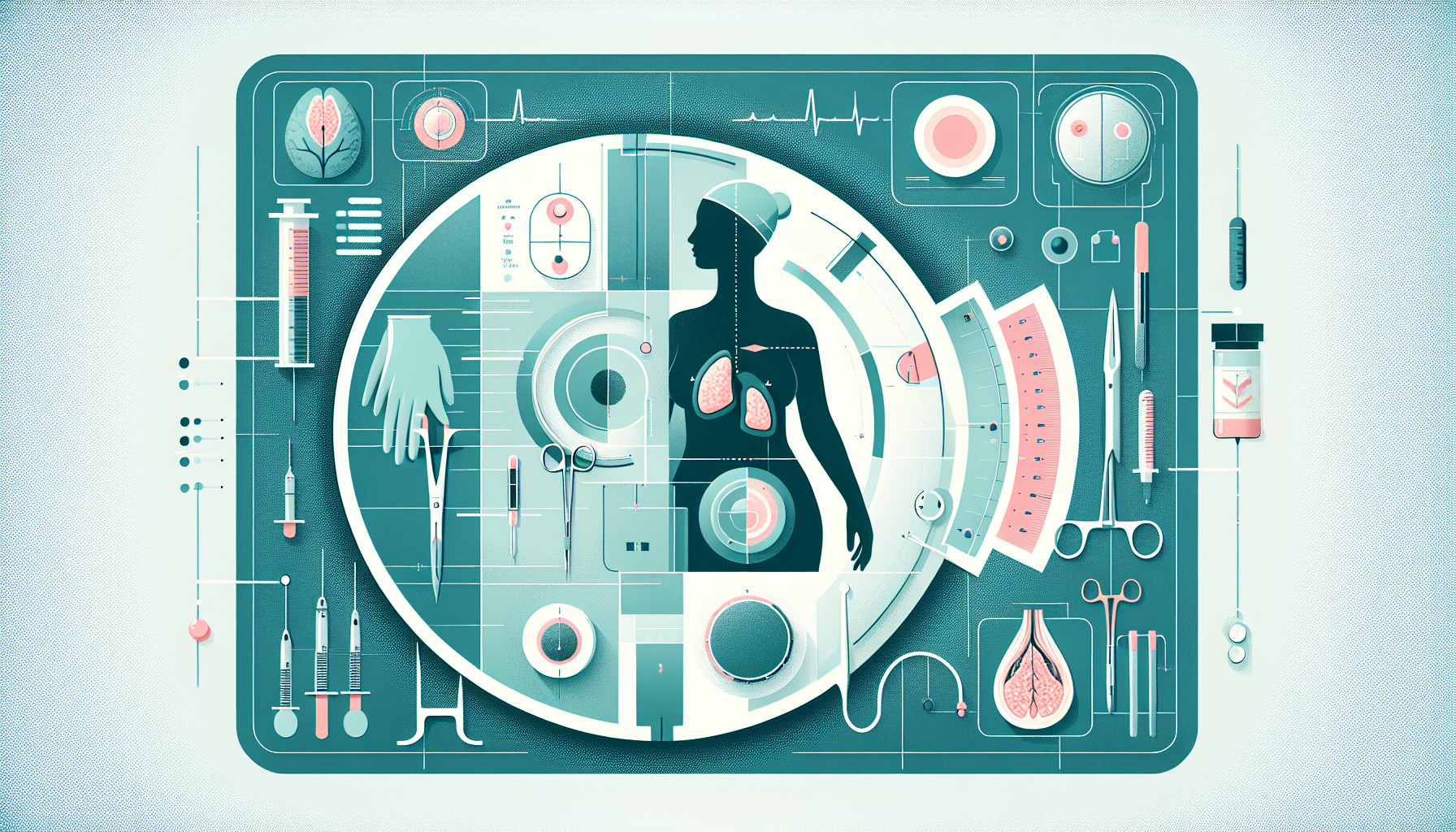Our Summary
This research paper discusses the increase in mastectomies (the surgical removal of one or both breasts) over the years, which is largely a result of more women opting for risk-reducing mastectomies (RRM) to prevent or treat breast cancer. The study suggests that such intense preventative surgeries are only necessary for high-risk breast cancer cases. For these women, having a preventative mastectomy can help control the spread of the disease, and may even increase their chances of survival. However, the growing popularity of this surgery cannot be explained by medical reasons alone. The paper explores the current evidence around RRM, how it’s used in clinical practice, and potential reasons for the rising trend of this aggressive surgical approach.
FAQs
- Why have mastectomy rates increased significantly over the last few decades?
- What are risk-reducing mastectomies (RRM) and how are they used in the treatment and prevention of breast cancer?
- What are the benefits of prophylactic mastectomies and in what situations are they justified?
Doctor’s Tip
One helpful tip a doctor might tell a patient about mastectomy is to make sure to follow post-operative care instructions, including proper wound care, physical therapy exercises, and attending follow-up appointments with the healthcare team. It is important to take care of oneself both physically and emotionally during the recovery process. Additionally, discussing with the healthcare team about reconstruction options and support resources available can help the patient navigate through the emotional and physical challenges associated with mastectomy.
Suitable For
Patients who are typically recommended mastectomy include:
- Patients with a high genetic risk of breast cancer, such as those with BRCA1 or BRCA2 mutations.
- Patients with a strong family history of breast cancer, especially if diagnosed at a young age.
- Patients with a personal history of breast cancer in one breast and a high risk of developing cancer in the other breast.
- Patients with certain types of breast cancer that are more aggressive or have a higher risk of recurrence, such as triple-negative breast cancer.
- Patients with large tumors or tumors in multiple areas of the breast that may not be effectively treated with breast-conserving surgery.
- Patients who have undergone unsuccessful or incomplete breast-conserving surgery and require further treatment.
- Patients who are unable or unwilling to undergo radiation therapy following lumpectomy.
- Patients who have a history of radiation therapy to the chest, which may increase the risk of developing a second breast cancer.
- Patients with certain medical conditions or factors that may make breast-conserving surgery less effective or safe, such as large breast size or connective tissue disorders.
Timeline
Before mastectomy:
- Diagnosis of breast cancer or identification of high-risk factors for developing breast cancer.
- Consultation with healthcare providers to discuss treatment options, including the possibility of a mastectomy.
- Preoperative assessments, including imaging studies and blood tests, to evaluate the extent of the disease and overall health status.
- Decision-making process involving discussions with healthcare providers, family members, and possibly a multidisciplinary team.
- Preoperative preparation, which may include education about the procedure, potential risks and complications, and postoperative care.
After mastectomy:
- Surgery to remove one or both breasts, which may involve different techniques depending on the extent of the disease and patient preferences.
- Recovery period in the hospital or outpatient setting, which may include pain management, wound care, and physical therapy.
- Follow-up appointments with healthcare providers to monitor healing, manage any complications, and discuss potential reconstructive options.
- Emotional support and counseling to cope with the physical and emotional changes resulting from the surgery.
- Long-term follow-up care to monitor for any signs of recurrence or complications, and to address any ongoing concerns or needs related to the mastectomy.
What to Ask Your Doctor
- What are the different types of mastectomy procedures available, and which one would be most appropriate for my situation?
- What are the potential risks and complications associated with mastectomy surgery?
- How will mastectomy affect my physical appearance and body image?
- Will I need additional treatments, such as radiation therapy or chemotherapy, after mastectomy?
- What is the recovery process like after mastectomy surgery, and how long will it take before I can resume normal activities?
- What are the chances of the cancer returning after mastectomy, and what steps can be taken to reduce this risk?
- Are there alternative treatment options to mastectomy that I should consider?
- How will mastectomy impact my long-term health and quality of life?
- Can I choose to undergo breast reconstruction surgery at the same time as my mastectomy, and if so, what are the options available?
- Are there any support resources or organizations that can provide additional information and assistance for patients undergoing mastectomy surgery?
Reference
Authors: Chiesa F, Sacchini VS. Journal: Minerva Ginecol. 2016 Oct;68(5):544-7. Epub 2016 Jan 19. PMID: 26785281
